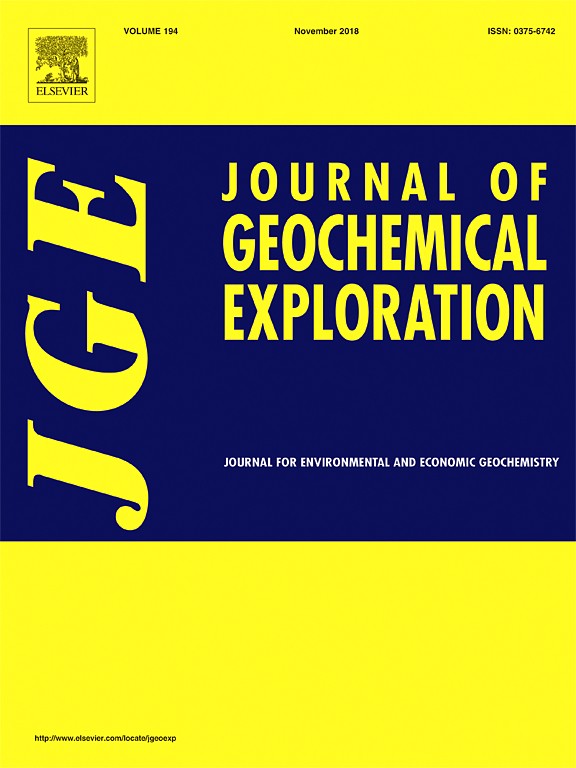
Mineralogical and geochemical investigations of the Dajia Salento-type bauxite deposits, western Guangxi, China
The Dajia Salento-type bauxite deposit in western Guangxi is hosted within the Quaternary ferrallitic soil profile, and it formed via breaking up, weathering and oxidizing of Permian bauxite orebodies occurring as a semi-continuous layer in the upper Permian. Mineralogical analyses reveal that diaspore, hematite and kaoliniteare the major minerals in bauxite ores with small amounts of anatase, chamosite, gibbsite, goethite, illite, zircon, quartz and pyrite. The ore texture and mineral assemblage reveal that the depositional/diagenetic environment of the Dajia bauxite was much close to phreatic environment. Both the ore texture and the morphology of zircon grains also indicate that most of the bauxitic soils were transported a short distance. Diaspore is suggested to be non-metamorphic in origin and mainly formed in a reducing condition of diagenetic environment, while kaolinite is the product of the in situ epigenetic replacement of alumina in diaspore by dissolved silica. Geochemical analyses indicate that Al2O3, Fe2O3, SiO2 and TiO2 are the main components of the bauxite ores and trace elements such as Zr, Hf, Nb, Ta, Th and U were enriched during the bauxitization process. Simultaneously, Zr vs. Hf and Nb vs. Ta show a high correlation. Geochemical indices such as Zr/Hf, Nb/Ta and Eu/Eu* (among others) denote that the magmatic rocks related to the Emeishan plume in western Guangxi and the carbonates in the underlying Maokou Formation provided the main sources of material for the bauxite ores.
source: https://www.sciencedirect.com